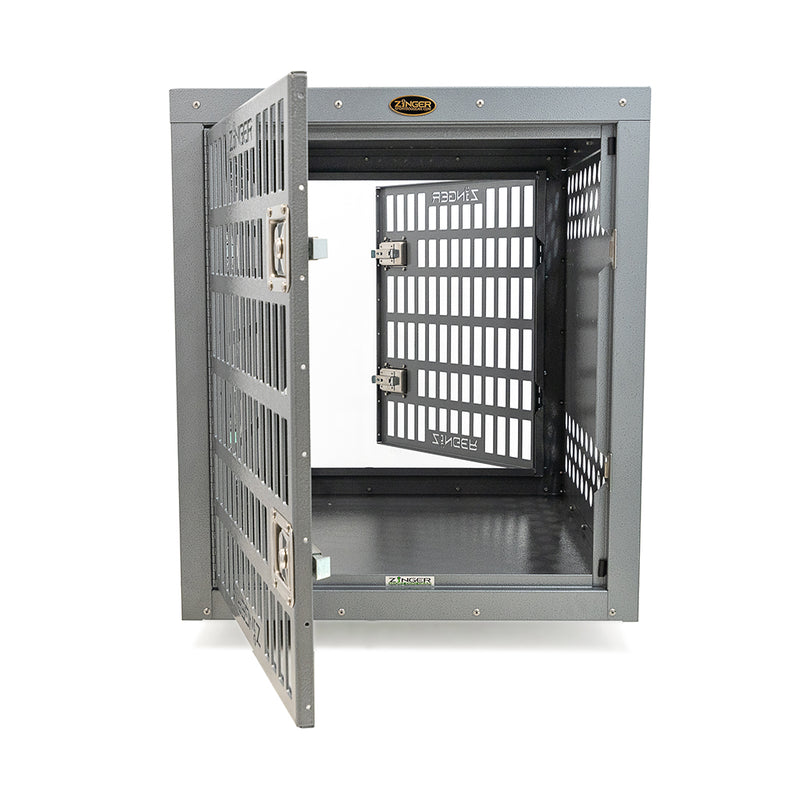Your Cart is Empty
Electronic Collars
Collars and Leads
Dog Tracking Systems
Dog Training
Bird Launchers
Hunting Dog Supplies
For The Hunter
Home Fragrances and Dogs
December 14, 2021 7 min read

The holidays, both traditional and shopping, are upon us. If you’re like me, your wife celebrated the infamous Candle Day to the max because she’s a candle hoarder…uh, I mean candle burner…and those orders will be arriving on your doorstep soon. Before you light that wick though, you might want to do some reading first. You may have heard that home fragrances are hazardous to dogs, but perhaps you’re unfamiliar with why. In this article, we’re going to break down the specific components of these home fragrances and why they pose a risk to your dog, plus offer some safe alternatives for ways to scent your space.
Hazards of Candles and Dogs
There are some more obvious risks to having an open flame and hot, melted wax with dogs, or any pet for that matter. Dogs, much like people, can experience various degrees of burns should they come in direct contact with a lit candle. Outside of the risk of burn wounds, there is a far more dangerous concern. The National Fire Protection Association estimated that animals have had a part in roughly 750 home fires per year, with candles being a lead contributor. If you want the benefits of a nicely scented room without the fire hazard, an electric wax warmer could be used instead or, at the very least, be sure to only burn candles where pets cannot get access to it and never leave pets unattended with an open flame in the home.
Unfortunately, not just any candle or scented wax is safe to use in a home with pets. The various components of candles, from the type of wax or the essential oil blend, opens the door for potential irritants and health risks to not only you, but also your beloved pets. Common waxes that candles are made of include paraffin, soy wax, beeswax, palm wax, various blends of these types. Paraffin is by far the most frequently used candle wax throughout the world due to it being one of the least expensive, but soy wax candles are growing in popularity.
Paraffin wax is a byproduct of petroleum refining. Some studies have been conducted regarding the safety of paraffin waxes to your overall health. One specific study found that paraffin candles emitted carcinogenic chemicals into the air when burned (and those chemicals lingered in the air well after the flame has been extinguished). It’s implied that frequent inhalation of these emissions could result in health risks, such as asthma, allergies, and even cancer. It should be noted that vegetable-based waxes tested during that study did not produce any unwanted chemicals. However, the National Candle Association refutes this notion of petroleum-based paraffin being harmful to health, stating that no peer-reviewed scientific study ever analyzed the emissions of any candle wax and found them to be of risk. Regardless, throughout all of my research for this article, I found the general consensus to be that soy wax candles may be “safer” to burn in your home if you have dogs because they are considered “clean burning.” It’s all about who you ask, I suppose. If you have concerns about the possible potential risk of certain waxes, just check the ingredients of the candle in question. Some candles are very transparent with the type of wax used, being readily displayed on the label, while others may require quick online research.
Furthermore down the rabbit hole of candle ingredients, the next element to discuss is the actual fragrance itself. What gives candles their scent? Well, scented candles use a variety and/or combination of natural and synthetic aromatic materials, primarily using essential oils. I am going to stress this now: Natural does not equal safe. More on this later.

Essential Oils Can Be Toxic
Essential oils are liquid extracts of plants that are popular in aromatherapy and alternative medicine. It’s not unheard of to scent your home with essential oil products and/or diffusers or apply essential oils directly to your skin in an effort to improve health, mood, or stress levels. If you ask my wife, it does the trick every time. However, these perceived positive benefits for you may result in significant negative health effects for your dog(s). While you’re experiencing stress reduction or calming sensations, your canine friend could be suffering from essential oil poisoning. There are several essential oils that are straight up toxic to dogs, some which could have fatal consequences. Please note though that toxicity isn’t just determined by the individual essential oil itself, but also base concentration or amount of product; age, health, breed, or weight of the dog; and other factors. Nevertheless, always avoid using these essential oils if you have dogs in your home as they are considered poisonous:
- Pennyroyal oil
- Pine oil
- Tea tree oil
- Wintergreen oil
- Cinnamon oil
- Citrus oil
- Peppermint oil
- Sweet Birch oil
- Ylang Ylang
If your dog ingests any of these essential oils or their skin comes in contact with it, quickly call your veterinarian and/or poison control. Additionally, you should never apply any essential oil orally or topically to your dog without first consulting your veterinarian. At-home flea and tick preventative treatments or concoctions to relieve various skin conditions using essential oils could do far more harm than good. Unfortunately, products that are marketed as being “natural” doesn’t always translate to being safe. The chemicals that essential oils are comprised of are quickly absorbed into the system regardless of application method and are metabolized by the liver. As such, dogs with liver disease, and both young and elderly dogs are greatly at risk of experiencing harmful side effects of essential oil usage. Negative reactions to essential oils that range in severity include, but are not limited to:
- redness and irritation of the lips, gums, or skin
- injury to the eyes, ears, nose, or throat
- gastrointestinal upset, vomiting, or drooling
- respiratory problems, such as difficulty breathing or panting; coughing or wheezing
- neurological problems, such as lethargy, tremors, disorientation, seizures, or ataxia (wobbliness when walking)
- liver damage or failure, or death
Each essential oil has its own reasoning as to why it is toxic. You may find that some of these essential oils are found in common pet products, but generally they are in very low concentrations that when used properly and according to the products directions, your dog should not experience harmful health effects compared to a dog that accidentally ingests pure 100 percent essential oil intending to be diffused.

Dangers of Essential Oil Diffusers and Dogs
Essential oil diffusers can be broken down into two categories: passive or active, as far as pets are concerned. Whichever diffuser type you opt for, always be sure that the oil you’re diffusing in your home is safe for your particular pet that also lives in the home. While some diffusers may be regarded as safer than others, that is irrelevant if you are using an oil that is toxic to your pet.
Reed diffusers, plug-ins, and warmers are all considered to be passive essential oil diffusers. What this means is that the diffusers evaporate the essential oil to release a scent into the room. The risks posed by passive diffusers are respiratory irritation. Depending on the location or setup of the diffuser, there is also the risk of ingestion or skin contact if it is knocked over or tampered with. Plug-ins should not be located anywhere that is dog height.
Active diffusers, such as nebulizers and ultrasonic diffusers not only run the risk of respiratory irritation, but also ingestion of the essential oils. These should not be used in areas where pets may be, especially those that groom themselves. Nebulizing diffusers force a stream of air at a high pressure through tiny tubes that contain whatever essential oil you’re using. As a result, the air turns the oil into a fine mist, or microdroplets, that are dispersed throughout the room. Ultrasonic diffusers work by diffusing essential oils via vibrations of a plate that, again, creates microdroplets of the essential oil that are dispersed into the air. Imagine that these microdroplets of toxic essential oils are accumulating on a dog’s coat or skin, and then the dog licks said area. Yikes!
Risks of Synthetic Room Sprays and Dogs
Volatile organic compounds, or VOCs, are human-made chemicals that are emitted as gases from certain household products when they are burned, heated, or sprayed. VOCs hugely impact indoor air quality for both humans and pets while also risking adverse health effects. VOCs are found in various cleaning products, adhesives, aerosols, air fresheners, and many other common products you may have throughout your home. The chemical composition of the products varies, but the results are mostly the same when pets come in contact. Signs and symptoms that your dog is struggling from synthetic fragrance spray products include:
- eye, nose and throat irritation
- skin reactions
- headaches, dizziness, or fatigue
- nausea or vomiting
- respiratory problems
Aerosols and artificial fragrance sprays are notorious for having irritating or harmful ingredients, especially those with essential oils within the ingredients list. These types of products should be avoided when pets are in the home, but luckily, some air freshening sprays are safe for spaces with dogs. Febreze, for example, is safe to use in homes with pets when used correctly. Never spray directly onto your pets and allow surfaces to completely dry before allowing your pets back onto the furniture or their bedding. If you merely want to mask the smell of pets in your home, soft furnishings can be washed with pet-safe detergents. Instead of spraying a dog bed with an aerosol room spray full of essential oils and harsh, irritating chemicals, opt for a bed with removable covers that can be regularly washed with a product like OdorKlenz Laundry Additive to remove the dog funk or use a pet-safe alternative, like Febreze.
Considerations for Home Fragrances and Dogs
The olfactory system of humans pales in comparison to dogs. If their sense of smell can pick up on scent molecules that are seemingly undetectable by humans, imagine how overwhelming and likely irritating a potent essential oil or strongly fragranced candle may be for your dog. For more information on your dog’s incredible sense of smell and the science behind it, check out our article “National Fragrance Day.” The scent may also make your dog curious and we all know the saying, “Curiosity killed the cat.” When inevitably investigating the fragrant product, your dog may accidentally come in contact with or ingest toxic essential oils that have severe health consequences. Whichever home fragrance you decide to use to scent your home, as a rule of thumb, it’s best to keep it as far away from your pets, and use in spaces that are well-ventilated to minimize inhalation. For any concerns you may have about home fragrances and the effects on your dog, consult your veterinarian for more information.
Thank you for reading! As always, we welcome any comments or feedback you have on home fragrances and suggestions on products that can de-funk or liven up your home. Also, if you have any questions or requests for future articles, please comment below!
- Michael Cassatt, Director of Marketing

Leave a comment
Comments will be approved before showing up.
Subscribe
Sign up to get the latest on sales, new releases and more …
Featured Products

Subscribe
Sign up to get the latest on sales, new releases and more …



